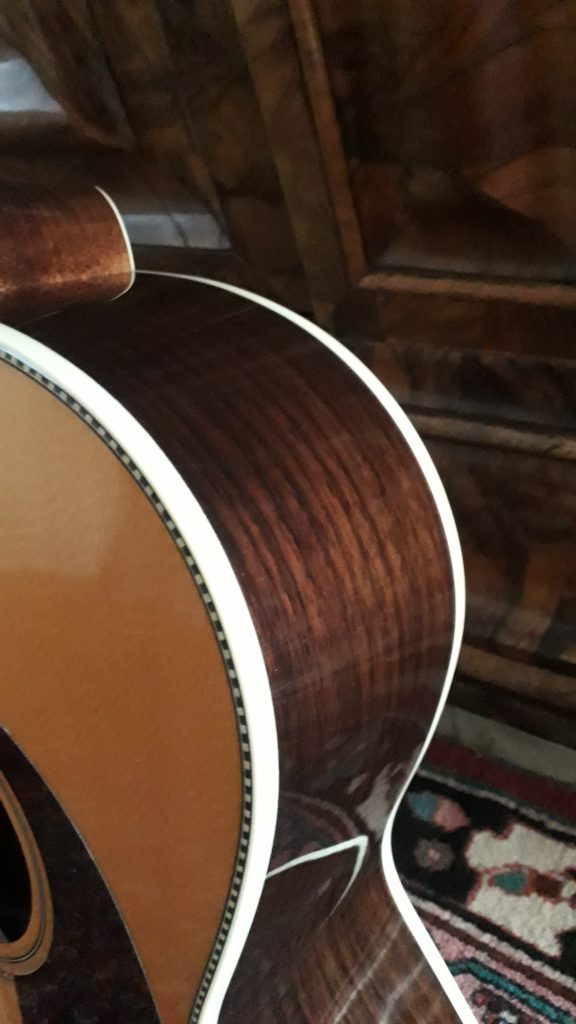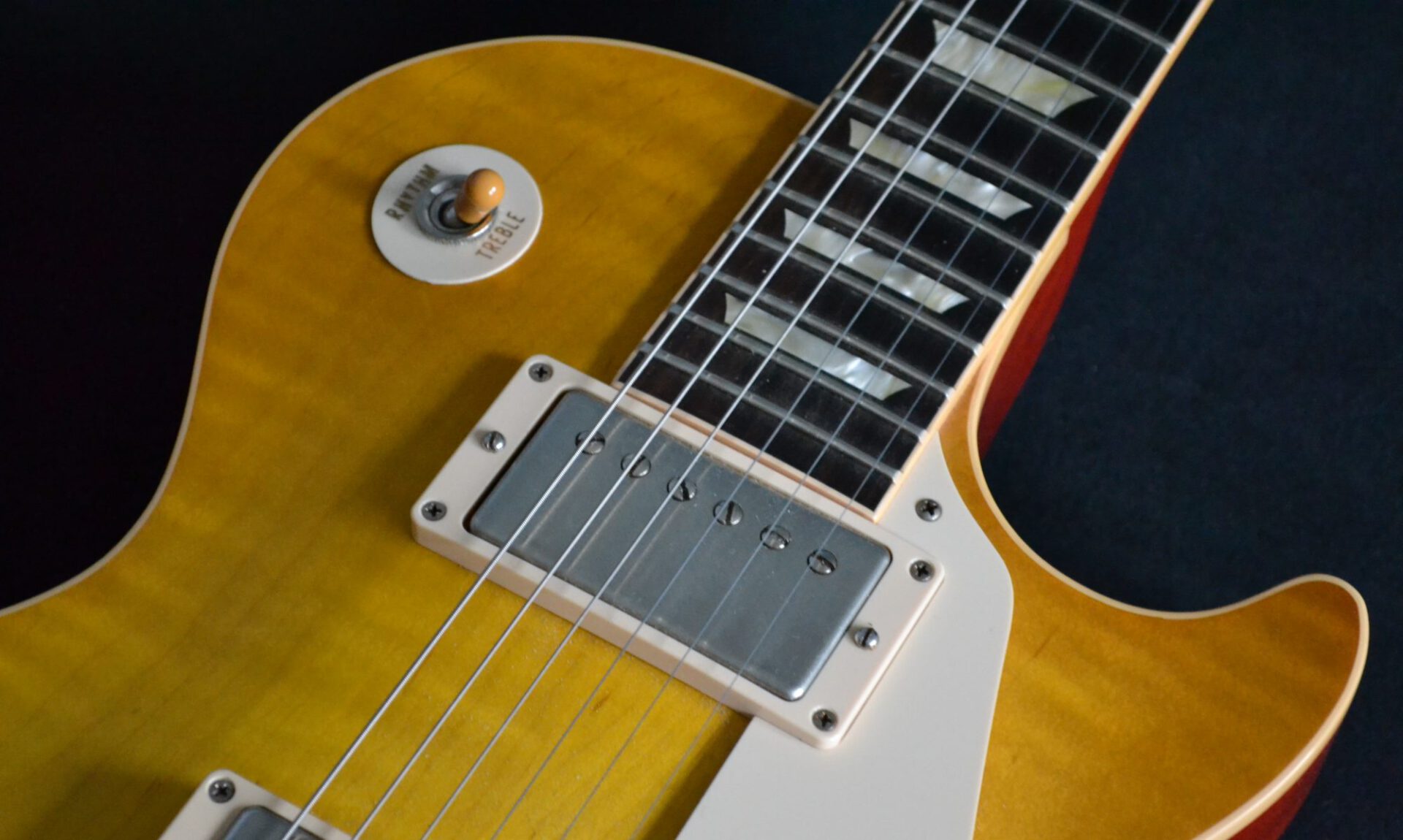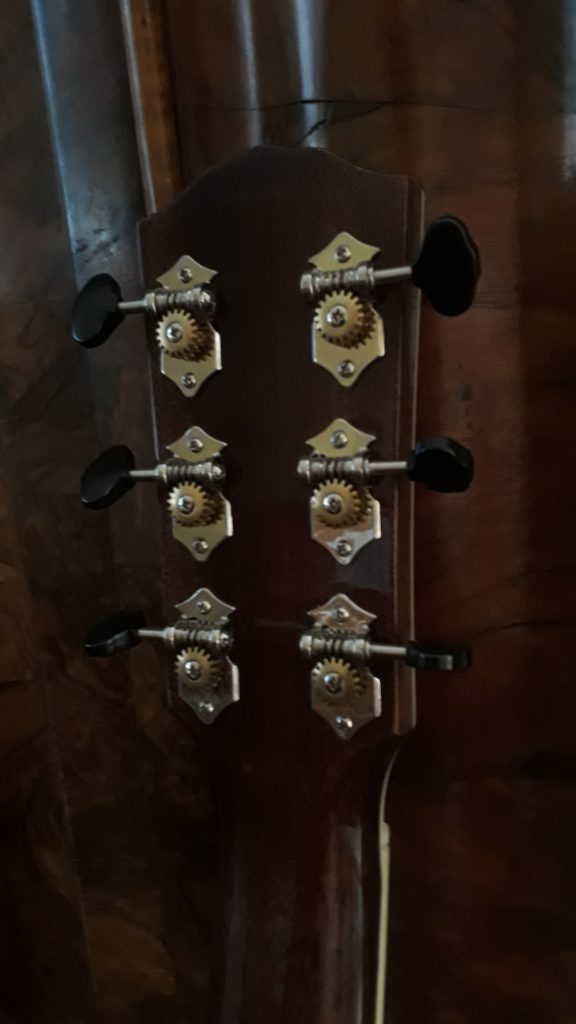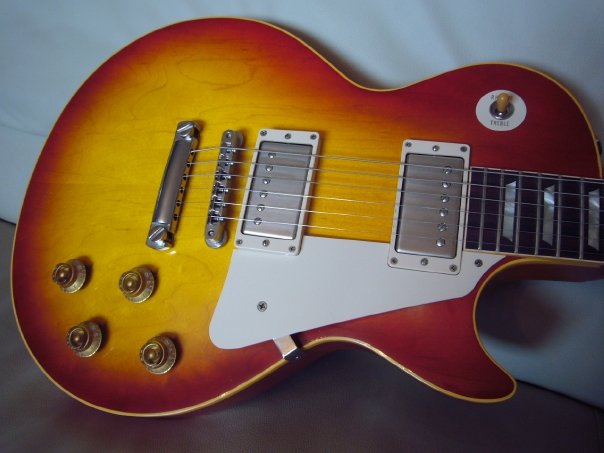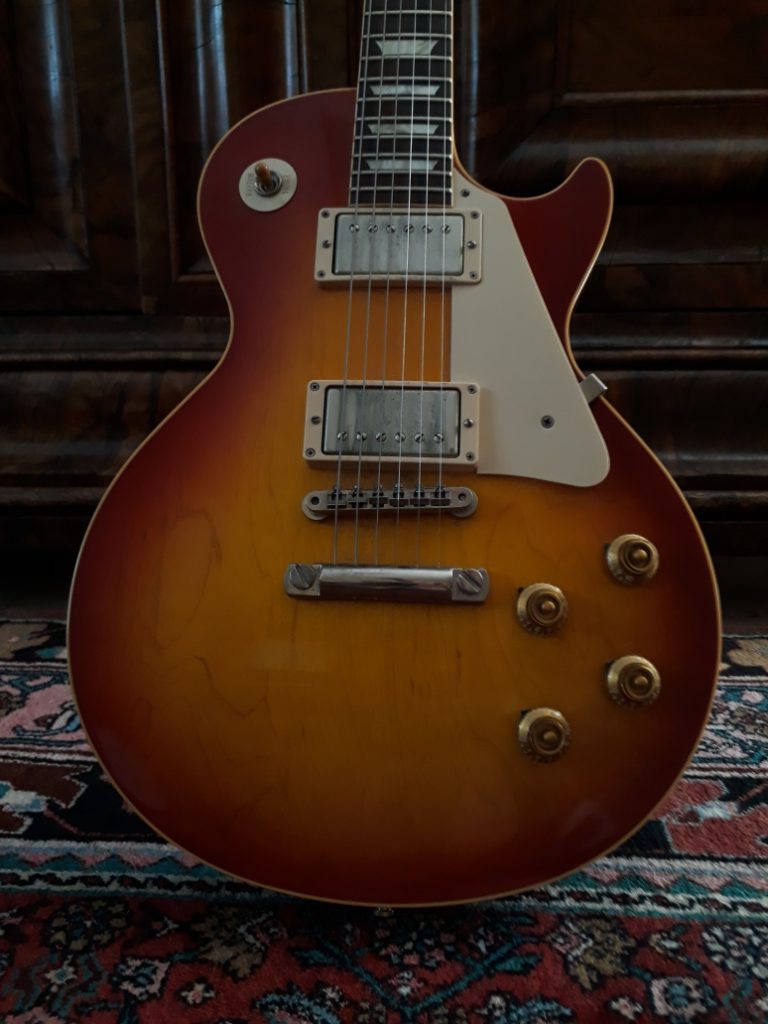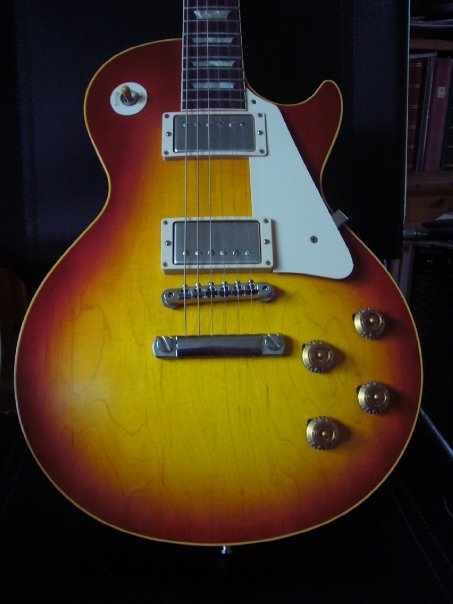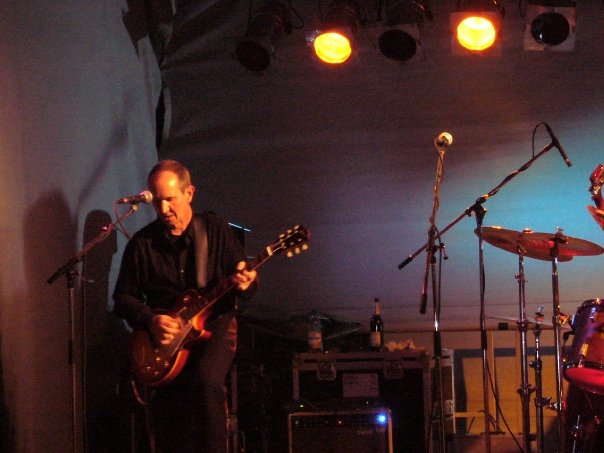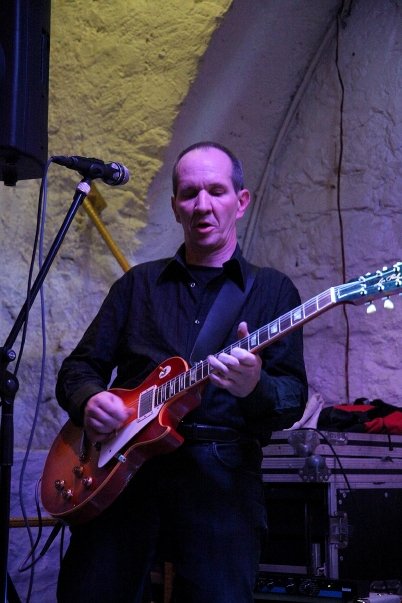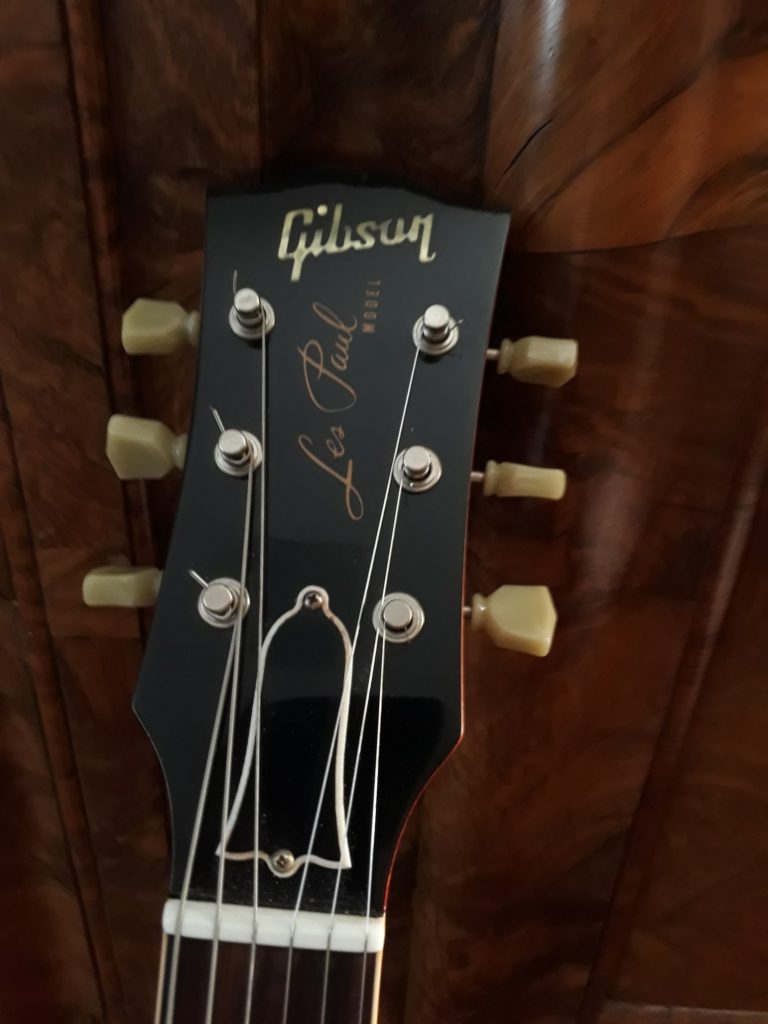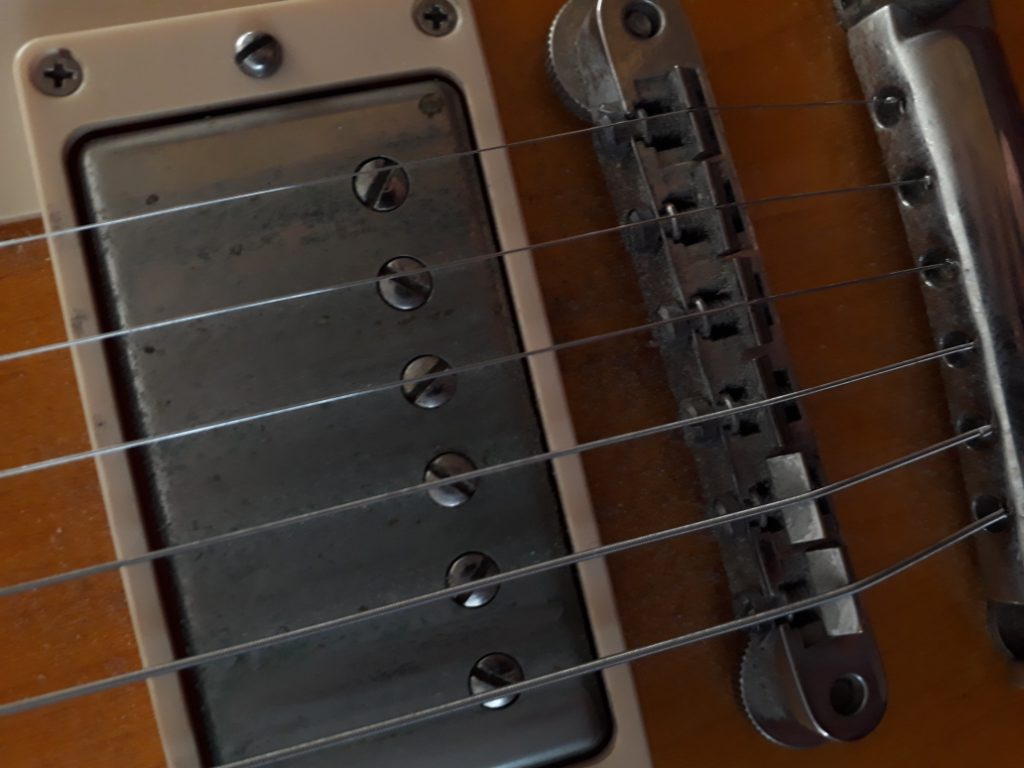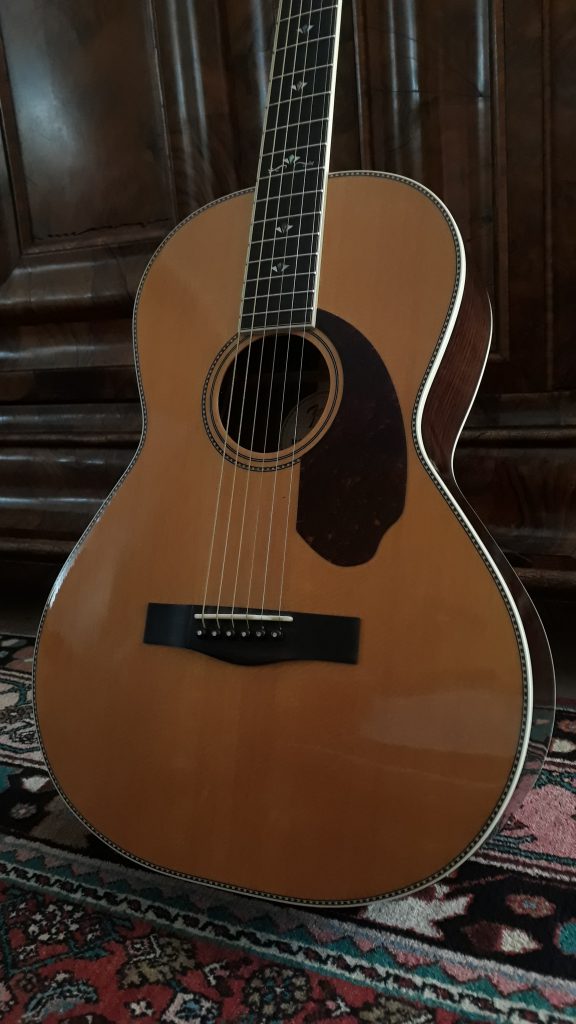
Fender PM-2 Deluxe Paramount Parlor is one of my favorite acoustic guitars. Love the small body sized guitar. And it sounds amazing to be heard on some tunes on my cd „On Scrambled tunes“. All the specs here:
Parlor corpus shape,, massive Sitka spruce top, massive Indian Rosewood back and sides, Ebony fingerboard, Mahogany neck (C-shape), bone nut and saddle
The PM-2 acoustic is equipped with a Fishman and Fender designed PM preamp specifically voiced to the shape of parlor acoustic guitar, responding to playing dynamics and bringing out the most subtle tonal nuances. Sitting flush with the side of the guitar, its smaller footprint offers maximum control in a discreet design.
Complete with tuner, frequency (bass, master volume and treble) and phase controls, this collaboration in preamp design not only offers versatile ways to fine-tune your tone, but also imparts an elegant retro look reminiscent of vintage radio knobs.
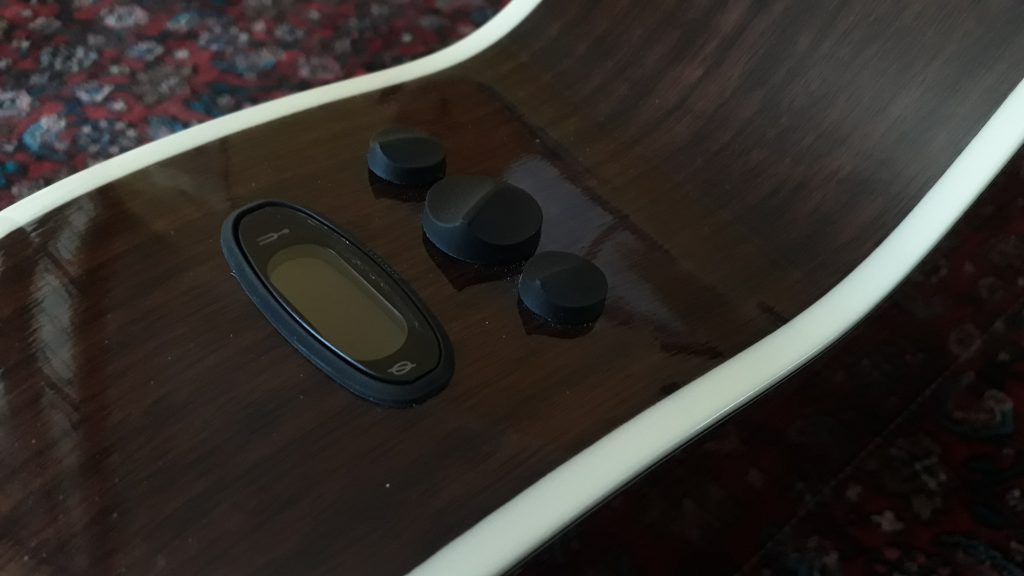
The Paramount Series (started in 2015) are designed with elements of classic ’60s Fender models, including checkerboard purfling and rosette, pickguard shape, and abalone and mother-of-pearl ‚Concert Tone‘ fingerboard inlays on the Deluxe models. Even with this art deco look, The Paramount Series acoustic guitars still retain their footing in modern design.
